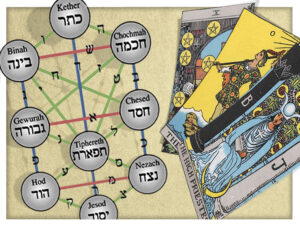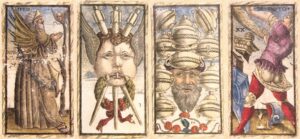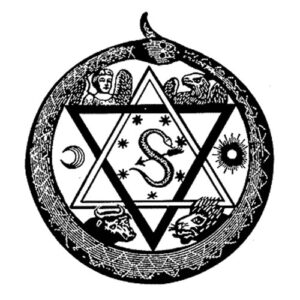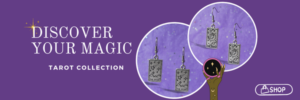In this article, we will discuss the forgotten history of tarot and its unknown other side.
History of Tarot Cards?
Who created the tarot is not exactly known. However, it is certainly associated with many esoteric schools like Gnosticism and Kabbalah. Some say it came from Central Asia, some say it came from India, China, or Egypt. But the strongest claim is that it came from Egypt. It is even said that Moses, an Egyptian priest, learned this knowledge and later carried it to the Middle East. After that, it’s known: tarot spreads from the Middle East to Europe and from there to the world.
The Spread of Tarot to Europe
The general belief is that we need to thank the Knights Templar for the spread of tarot to Europe. It is claimed that the Knights Templar obtained this knowledge from a mystic sect in Syria or the Bedouin Arabs during the Crusades and brought it to Europe. However, later on, the Knights Templars find themselves in trouble with both the Vatican and the French.
They have to live in hiding and escape. There’s a strong argument that they later turned these cards into a deck for entertainment and gambling purposes and deliberately discredited them. But none of these have been proven. As we said, these are all claims and we’re just throwing out the strongest ones. For example, another strong argument is that tarot dates back to pre-flood civilizations. There is a group of historians who claim that the origins of tarot go back to Atlantis or even Mu. The basis of this view could be the deep symbolism carried by the cards.
The First Tarot Deck
The first tarot deck appears in Italy. The interesting thing is that tarot appeared about 100 years after the destruction of the knights. This significant detail makes us think a bit about the connection of the cards with the knights. We know that the first proper tarot deck was the Italian Marseille tarot. At least, this is the truth within the information available on the internet, and it dates back to the second half of the 15th century. But it is also known that many decks were designed before that.

The Book of Thoth
The Book of Thoth is a detail that strengthens the claim that tarot originated in Egypt. What we call tarot is quite related to The Book of Thoth. Some even say that the information in this book was reflected in the cards through symbols!
The Book of Thoth originates in Egyptian mythology. The myth tells us that Thoth, the god of wisdom and writing, authored it. He filled it with his knowledge of the universe, including spells, the language of animals, and how to understand the gods themselves.
The myth describes it as a dangerous book. According to the legend, Thoth warned that anyone who read the book would suffer a terrible curse. Despite this warning, Prince Neferkaptah stole the book and read it. As Thoth had foretold, a tragedy befell Neferkaptah and his family, reinforcing the myth’s warning about the book’s potent power.

The real Book of Thoth, however, doesn’t exist as a single volume. Over time, the term “Book of Thoth” has become a generic name for ancient Egyptian texts about magic, the gods, and the afterlife.
What is the Story of the Archetypes in Tarot?
The archetypes in tarot reflect the consciousness of humanity. The cards go back to the beginning of humanity. So they don’t belong to any particular time, they are universal. Therefore, they are adaptable to all kinds of conditions. They were there 2000 years ago, and they are here now. Thus, the archetypes we encounter in tarot are directly related to collective consciousness.
This universality is one of the strongest features of symbolism. Because symbols can adapt themselves to the beliefs and views of every age. When we look at it, we see that the symbolism of tarot has changed a lot over the years. Even though it is very different from the symbolism used in the past, the meaning and spirit have remained the same. The symbol has renewed itself, but the inner value there has not changed. After all, that’s exactly what an archetype means; it means being related to the collective.
What Is The Meaning of the Word Tarot?
Alexander the Great changed the fate of many nations and countries and he may also have changed the fate and history of the tarot. When we look at the etymology, –tar means “road”, and -ro means “king”. Combining these two gives us meanings like Divine Path, King’s Path, or Divine Law. Torah, which also comes from the same root, means “divine law” in Hebrew. Why are the origins of these two words the same? The answer could be in Alexander the Great’s conquest of Egypt. With this conquest, Greek, Egyptian, and Kabbalah teachings are mixed, and symbols intertwine. This merger brings forth a powerful esoteric vein. Tarot is a product of this universal wisdom stream.
Tarot and Kabbalah
There are significant connections between Kabbalah and tarot. For example, there are 22 Major Arcana cards in tarot corresponding to the 22 Hebrew letters. Also, there are 10 spheres and 10 teachings/sefirot in the Kabbalah Tree of Life. These 10 sefirot are connected via 22 paths.

These 22 paths describe the evolutionary journey of a human desiring to reunite with the creator, just like in the Major Arcana. In short, each sphere in the Tree of Life corresponds to a card, a path, and a number. Therefore, it is very important to know numerology to interpret tarot.
Significance of Numerology In Tarot
The number of the card is what describes the essence of that card. Each letter in Hebrew corresponds to a card. For example, Alef, the first letter in Hebrew, corresponds to the first card, The Fool card. The 10 sefirot (wands, swords, etc.) have a place in the Tree of Life. For example, the story of the separation of man and woman, the expulsion from paradise, appears to us in tarot as the king and queen.
Renaissance and Tarot
Before the Renaissance, there was a strict papal institution. Of course, there were instances where tarot was marginalized, images were banned due to non-compliance with religious rules, and some symbols on tarot were altered to make them more appropriate. All of these events are a result of the lack of a full understanding of tarot or its purpose being distorted over time.

The true intent behind the passing down of tarot through generations is different. However, as tarot reaches more and more people, its purpose becomes increasingly corrupted and the methods of its use begin to change. Therefore, there was a period in Europe where it was seen as a tool against religion or an object that shouldn’t be used. However, the tarot provides information about a hierarchical cosmological system. In essence, it’s a tool of knowledge.
Towards the Modern Age
Around 1887, a society called the “Golden Dawn” was founded. The purpose of this society, founded by three English Masons, was to follow the trail of ancient knowledge and create a compendium of knowledge. Thus, they brought together many teachings such as Ancient Egypt, Greece, Kabbalah, and Gnostic Christianity. The Golden Dawn, in gathering various Western esoteric cultures and creating literature on ritual magic, prophecy, alchemy, philosophy, and metaphysics, is quite significant. Among the modern-day members of this society are William Butler, Alistar Crowley, and Arthur Edward Waite, the creator of the original Rider Waite tarot deck.

By 1910, Rider Waite publishes a two-volume book on tarot, and together with Pamela Smith, they prepare the deck we hold in our hands today. And suddenly, people start looking at the tarot again. Pamela prepares the Minor Arcana while Arthur Waite prepares the major part.
One of the best resources written about the Golden Dawn is S.L. McGregor Mathers’s “The Tarot” book. In this book, Mathers specifically defines the cards in the context of astrological, Kabbalistic, elemental, and spiritual meanings.
What Must One Know To Read Tarot Symbolism?
First and foremost, you need to know numerology. Numbers are very important; you need to know why a card is represented by a certain number. Then comes astrology. Because the cards depict cosmic relationships between planets. Every card is based on an astrological foundation. It’s essential to be able to read the language of esoteric symbols well.
Nevertheless, reading the external meaning of tarot is quite easy. Everyone can do it. It is enough to be a bit familiar with the history of esoteric doctrines or Hermetic symbolism.
What Is The Story Behind Tarot Cards?
Looking at the Major Arcana, we see that it is based on two journeys of 10 cards each. This represents the truth emerging in 10 stages, which is a very common esoteric view. Buddhists, Neo-Platonists, and Sufis all offer a 10-stage map of human evolution. This understanding comes to the modern West with tarot. The evolution journey, that is, the progression journey of the person, tarot sets up a system that tells the story of the human soul. In short, each card and stage tells a new level of spiritual awareness.
Is Tarot Supernatural?
Tarot shows us all the answers, “What is our purpose, why are we here, what should we do, which direction are we going”, in the responses it gives us. It almost gives us clues about our future. Despite all the accurate results opened with Tarot, the cards are not supernatural. This is a common misconception. If you sometimes feel like the energy of the cards is intensified, remember that it stems from you. It’s your energy.

